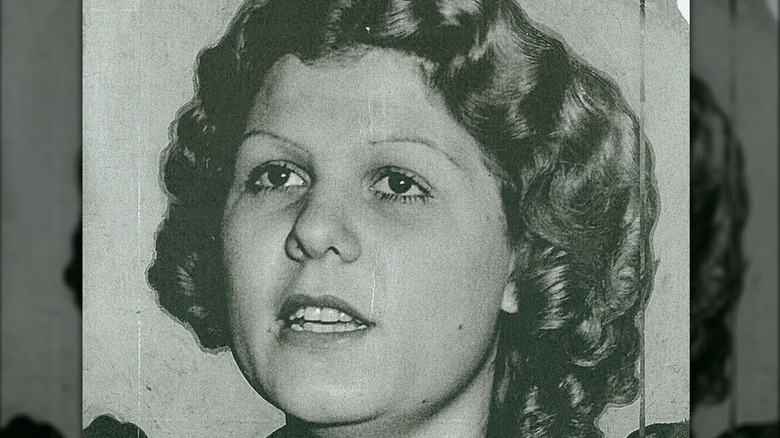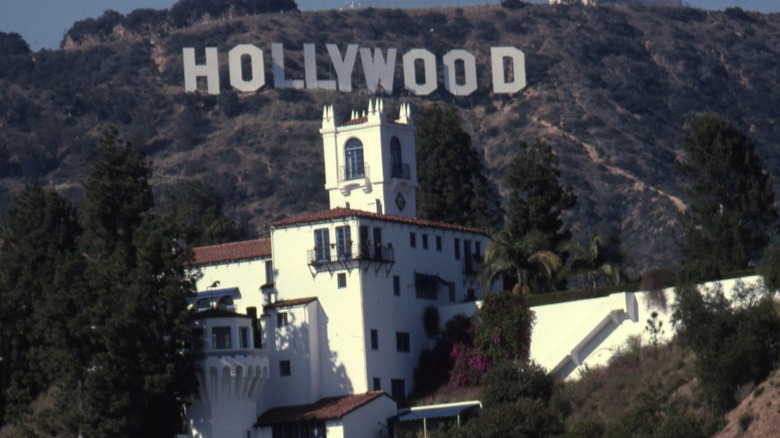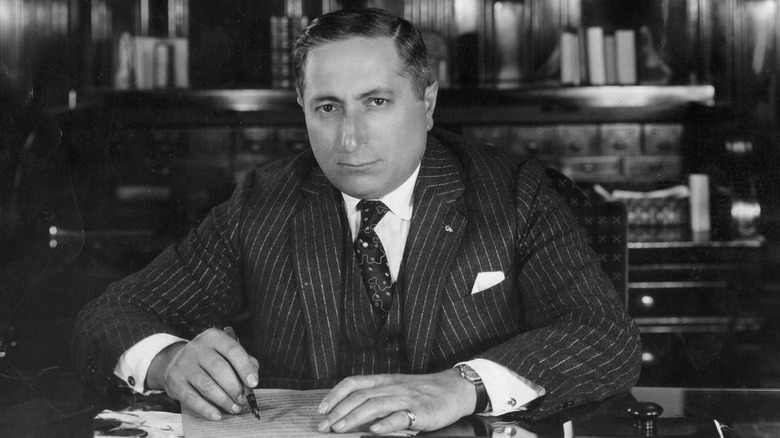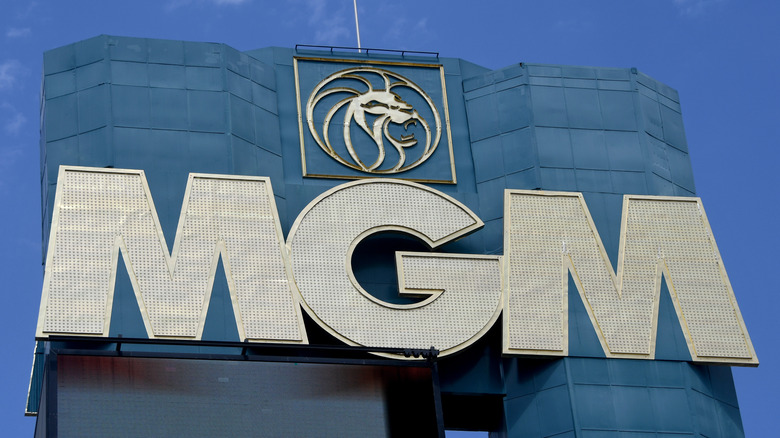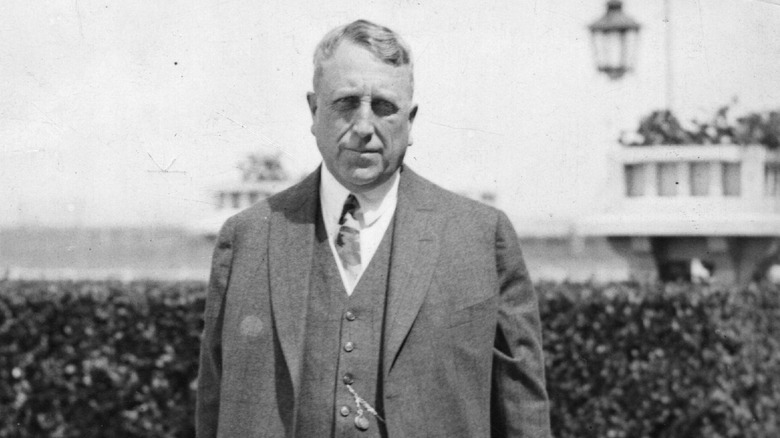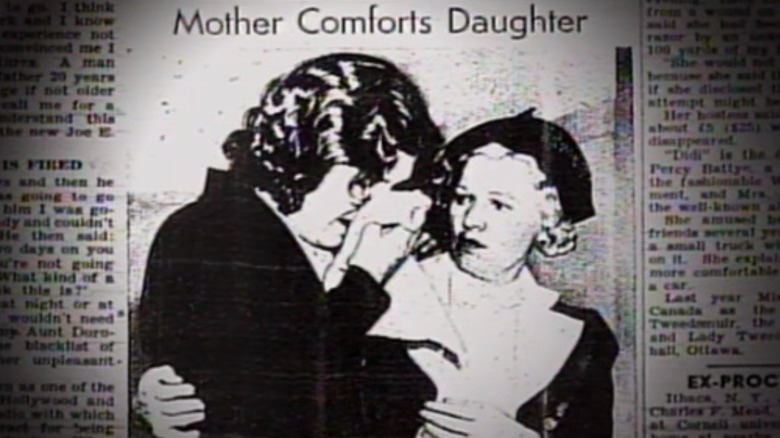The Tragic Hollywood Tale Of Patricia Douglas
The Me Too Movement has lifted the lid on the rampant sexual abuse in Hollywood circles. Some of the biggest names in the entertainment industry, including pioneers and legends from film, television, and news, have had their skeletons thrown from the closet. From actors such as Kevin Spacey and James Franco to once-trusted newsmen like Matt Lauer and Charlie Rose, the movement has exposed the ugly side of the entertainment industry and, in cases like that of Harvey Weinstein, has led to criminal convictions.
The ugly truth about Hollywood is that the Me Too Movement has been a long time coming. Since its earliest days, girls and women in Hollywood have been at the mercy of powerful men in the industry. In Suzanne Finstad's biography about the late actress Natalie Wood, she says that the actress was raped by a "powerful, married movie star" when she was just 16 years old (via BBC). Lana Wood, Natalie's sister, alleges that it was famed actor Kirk Douglas who attacked Natalie (per AP News). A generation prior in 1943, film star actor Errol Flynn was tried and acquitted on statutory rape charges levied against him by two different teenagers, Peggy Satterlee and Betty Hansen (per The Hollywood Reporter).
There are too many examples of sexual misconduct, abuse or harassment among powerful figures in Hollywood. And as society looks back at these actions once normalized, it has also given a voice to victims and survivors like Patricia Douglas.
Patricia Douglas ran in tight Hollywood Circles
Patricia Douglas moved to Hollywood when she was just a young teenager. Her mother, Mildred Mitchell, had traveled to the cinema capital in hopes of a career design gowns for Hollywood's leading ladies (via Vanity Fair). Similar to many stories of people going out to Hollywood to fulfill their dreams, Mildred would not see her dresses on the red carpet. Instead, she settled for a job working as a couturière for high-end sex workers. Patricia, on the other hand, found some success in Hollywood.
Despite (or because) of her young age, she caught the eye of many actors and studio workers. Douglas recalled spending nights hanging out with the likes of Bing Crosby, Jimmy Durante, Larry Fine of the Three Stooges, and Bill Frawley. Because she did not drink, date, or dream of stardom, celebrities found her appealing. At only 15 years old, Douglas, a dancer, appeared in two films, "So This is Africa" and "Gold Diggers of 1933." While she was far from being a star actress or celebrity personality, Douglas still was well connected enough in the movie industry to be invited to a party on the night of May 5, 1937. However, Douglas was not told it was a party. She said in an interview that it was a casting call to play a cowgirl, along with around 120 other girls and young women. She said, "They never mentioned it was for a party. I wouldn't have gone! Oh God, oh God, I wouldn't have gone."
The night of the attack was preceded by days of partying
That night, the party was hosted by MGM Studios in celebration of their recent success (via Vanity Fair). Already battling other big studios in Hollywood, another blow hit the studio at the beginning of the 1930s, as well as the rest of the country. The Great Depression had sent Fox, Paramount and RKO Studios into bankruptcy, and MGM would have followed them if not for the financial strategy devised by their sales executive team, By 1937, a string of commercial and critically successful films had saved the studio, and Louis B. Mayer (above), the head and co-founder of MGM, scheduled a five-day sales convention in Culver City to celebrate.
The convention became a raucous party, with conventioneers drinking like fish and groping the women serving them. By the night of May 5, the third day of the convention, the partygoers were completely out of control. Drinking, meeting actors contracted to MGM like Joan Crawford and Clark Gable, and officers seemingly looking the other way, made the night of the party into a feeding frenzy. Some 300 men lusted and grabbed at the 120 girls working at the party, Douglas included.
Douglas said a salesman from Chicago named David Ross targeted her throughout the night. She recalled Ross and another man holding her down and forcing alcohol down her throat. She ran outside to get some air when Ross grabbed her from behind and forced her into a car, where he raped her.
Patricia Douglas was ignored before and after filing a complaint
Around 11:30 p.m., a beaten and emotional Patricia Douglas and a fleeing David Ross were spotted by Clement Soth, a parking attendant (via Vanity Fair). She was taken to Culver City Community Hospital where she was given a cold-water douche before she was examined. The doctor who examined her, Dr. Edward Lindquist, was reliant on MGM for his practice and said there was no evidence of any intercourse. Douglas believed the douche had wiped away all the evidence. She was driven home by motor policeman Tom Lindsay, who did not file a crime scene report.
Douglas was in pain for the next 14 hours and returned to the studio two days later to try to tell someone of her attack. Instead, she was just handed her paycheck for the night. Douglas filed a complaint against David Ross at the Los Angeles County district attorney's office. Her mother, Mildred Mitchell, had to sign documents as Douglas' court-appointed guardian.
Unfortunately, the city's D.A., Buron Fitts, was far from impartial. He was close friends with Louis B. Mayer and Mayer had been a top contributor to his reelection campaign. Fitts had also been indicted for perjury in another rape case. Screenwriter Budd Schulberg said of Fitts and MGM, "Buron Fitts was completely in the pocket of the producers ... The power MGM had is unimaginable today. They owned everyone — the D.A., the L.A.P.D. They ran this place."
MGM used their power and influence to destroy the case
For MGM, the story was not much of anything until Douglas hired William J. Brown as her attorney after waiting for Buron Fitts to investigate her claim (via Vanity Fair). Brown took her case pro bono and was seen as a pre-Johnnie Cochran-type attorney: charismatic, fighting for the underdog, controversial, but usually getting results. When the story finally hit the newsstands, despite the papers leaving out the name of the studio, MGM was in a panic. William Randolph Hearst (above) wrote a letter to Louis B. Mayer saying that if he did not "shut it down" and "make her stop" the film industry would be destroyed (per The Hollywood Reporter).
Mayer took the media giant's advice. He hired the Pinkerton Detective Agency to harass any potential witnesses and the girls at the party into silence. He also led a tarnishing campaign against Douglas, saying she had a venereal disease and was of bad moral character. At the grand jury, only two of the girls provided testimony about the party, and the parking attendant who saw David Ross said he saw a different man. It would be later revealed by his children that he perjured himself for lifelong employment at MGM. Unsurprisingly and unfortunately, the grand jury did not indict Ross, who had been in contact with Louis B. Mayer's own attorney. After multiple appeals going all the way up the chain to the federal court were dismissed, Douglas was out of options.
Patricia Douglas' life after and reemergence in the Me Too Movement
Less than a year after her attack, Patricia Douglas was left out in the cold by her two most trusted allies, her mother and her attorney (via Vanity Fair). Seeking to challenge Buron Fitts in the 1940 District Attorney election and not wanting to make an enemy out of MGM who ran the town, William Brown failed to appear at three consecutive court days for Douglas, seemingly abandoning the case. The federal judge dismissed the case "for want of prosecution." Brown would lose handily to Fitts in the election.
Mildred Mitchell did not pursue any malpractice charges against Brown, which could have landed her daughter another attorney. She seemed to have given up as well. Eventually, she married an alcoholic man who would abandon her with her life savings. Douglas eventually moved to Bakersfield, then Las Vegas following her failed appeals. She was married three times in five years and said of her love life, "I've never been in love and I've never had an orgasm. I was frigid."
For decades, Douglas did not talk about her life in Hollywood. In 2007, four years after her death, David Stenn's documentary, "Girl 27" (trailer on YouTube) recounted the now-forgotten story of Patricia Douglas' rape allegation (per The Hollywood Reporter). Her interview with Stenn detailing her attack picked up greater significance a decade later at the dawning of the #MeToo Movement. Since then, Douglas has been seen as an early pioneer of the movement, and as Stenn expressed in an interview (also on YouTube), "a hero."
